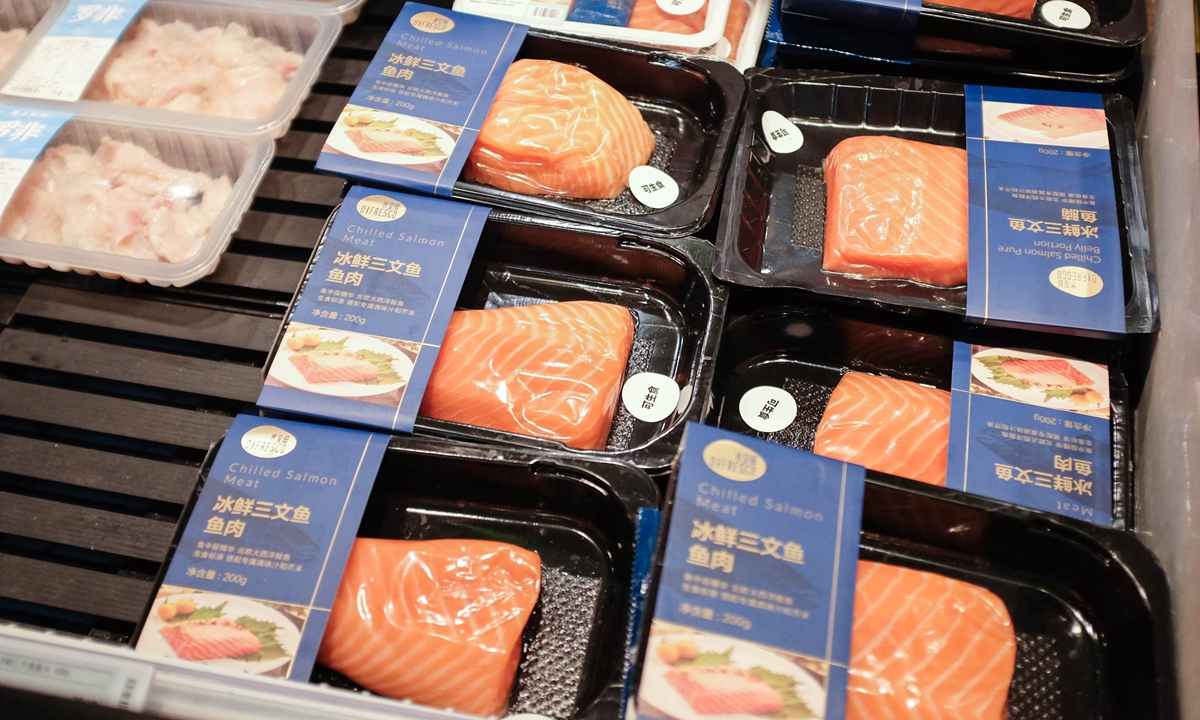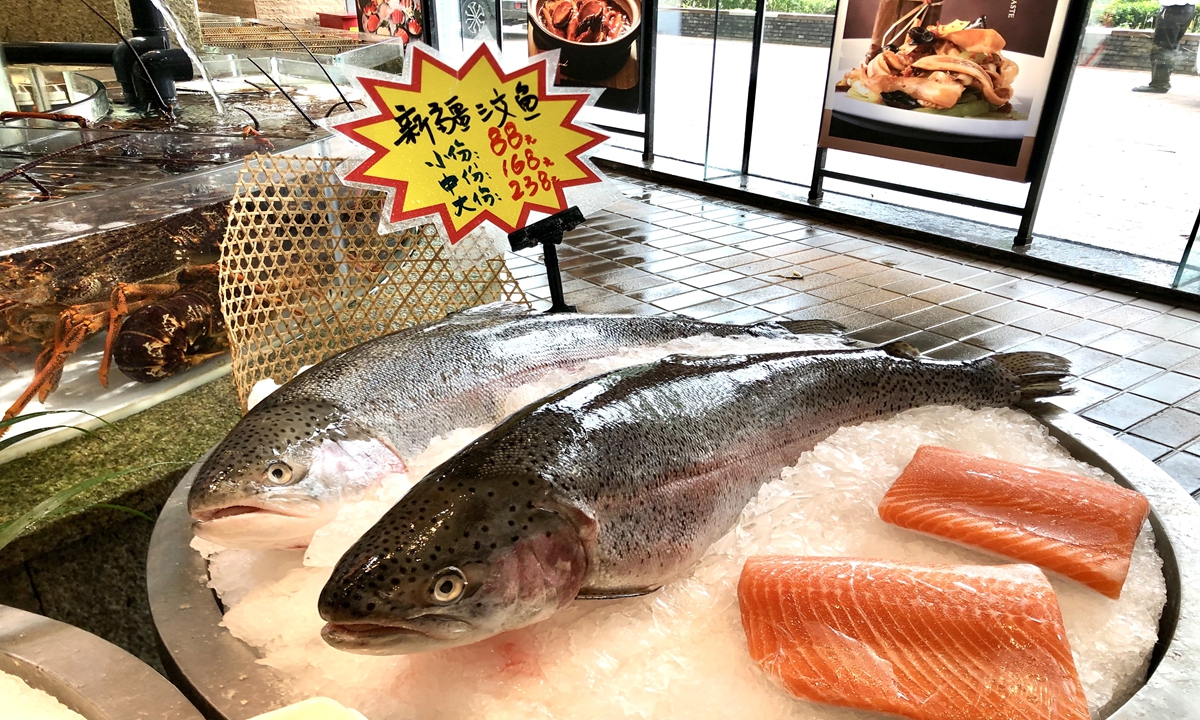
Norwegian salmon sold at a supermarket in China. Photo: Courtesy of the Norwegian Seafood Council
The wholesale prices of freshly imported salmon have notably declined in the Chinese market. Experts and media reports attribute this to various factors, including ongoing weak global demand, particularly in major consuming markets like the US.
Additionally, there's subdued sentiment in Japan, influenced by concerns over the arbitrary dumping of nuclear-contaminated wastewater into the ocean. Fresh salmon, commonly utilized in Japanese cuisine, especially for sushi, is affected by these dynamics, among other contributing factors, the Global Times learned on Monday.
The wholesale price of fresh Norwegian salmon on JD.com, a China-based online shop, hit a 175-day low on Monday.
On May 30, the price of Norwegian salmon was still around 135 yuan ($135) per kilogram. In just 10 days, its price has dropped by more than 20 percent.
Many retailers cut online prices as they sought to boost sales.
However, Sam's Club, a major supermarket chain owned by Walmart, and Freshippo, a well-known China-based new retail platform, told the Global Times that the retail prices of salmon from Norway have remained stable in recent days.
"If retail prices stay stable while wholesale prices fall, consumer demand may not change," Zhao Jingqiao, director of the Service Economy and Catering Industry Research Center under the Chinese Academy of Social Sciences, told the Global Times on Monday.
Zhao said that the decline in wholesale prices may result from improved cross-border supply chain efficiency, lower international market prices or increased supply.
Industry insiders said that the Chinese salmon market is directly linked to the international market. If the international wholesale prices fall, the domestic wholesale prices will follow suit in one day or two.
The recent price plunge also reflects the supply and demand relationship in the international market. During the COVID-19 pandemic, the increase in global salmon consumption mainly came from the US. After the US market peaked in 2021, seafood imports declined, according to media reports.
Also, there's subdued sentiment in Japan, influenced by concerns over the arbitrary dumping of its nuclear-contaminated wastewater into the ocean. A Beijing-based consumer told the Global Times on Monday that he has reservations about eating salmon, a popular ingredient in Japanese sushi, partially because of remaining concerns over the Fukushima nuclear-contaminated wastewater dumping.
Even though seafood from Japan, including salmon, has been banned from the Chinese market since August 24, 2023, negative consumer sentiment toward Japan-related seafood persists.
Meanwhile, Salmon imports from countries such as Norway are increasing as the Nordic country embraces the vast Chinese market.
On Monday, Freshippo told the Global Times that Norway's largest salmon producer, MOWI, and the fourth-largest, Cermaq, have formed partnerships with Freshippo. These cover year-round supply agreements with Norway's salmon farms, ensuring stable supply, optimal costs and high turnaround efficiency.
Freshippo said that a dedicated "fast track" for Norway's salmon has been established, reducing port arrival time from 90 hours to 72 hours, effectively reducing transportation costs and enabling better cost controls.
Norway was the dominant source of China's imported fresh salmon, with imports totaling 39,400 tons in 2023, covering 49 percent of China's market, data from China's General Administration of Customs showed.
China's consumers increasingly favor Norwegian salmon, as the Norwegian Seafood Council reported a 65 percent year-on-year increase in salmon exports to China in 2023. Freshippo's salmon sales rose more than 50 percent year-on-year.
Fresh salmon's market share is expected to rise as demand in China is seen increasing, a report by China's Aquatic Products Processing and Marketing Alliance showed on May 30. Improvements in domestic cold chain logistics mean that fresh and frozen salmon products have become mainstream consumer items.
Global Times

